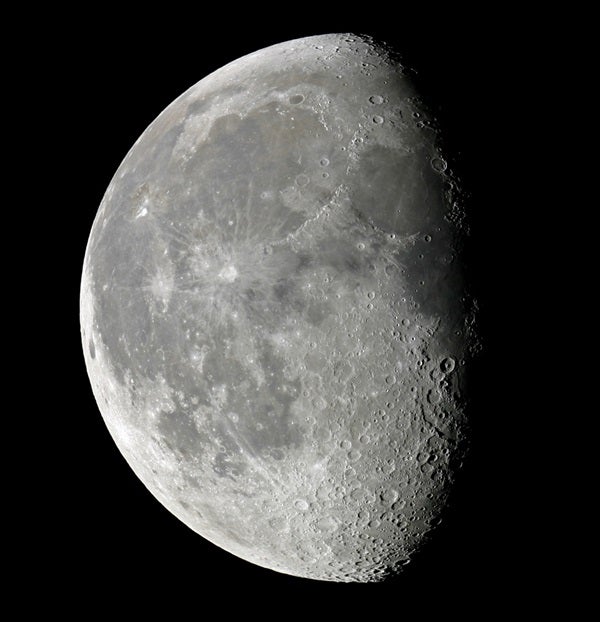Transcript
People have known about the Moon practically forever, predating their knowledge of most astronomy or, really, anything else. After the Sun, it’s the brightest object in the sky, and the unusual pattern on its face makes it a perfect object for curious minds to wonder about. Its presence in the night sky can mean the difference between inky blackness and brighter surroundings, as any ancient hunter, or modern astronomer, can tell you.
The Moon measures some 2,160 miles (3,480 kilometers) across, about a quarter of Earth’s diameter, but its mass is only about 1 percent of Earth’s. Because of this, someone who weighs 150 pounds (68 kg) on Earth would weigh just 25 pounds (11 kg) on the Moon — a pretty simple, but still difficult, way to lose weight. In all our history, only 12 people have ever walked on the surface of the Moon, which is still an impressive feat considering it’s about 239,000 miles (385,000 km) away.
Although some asteroids occasionally slip within its orbit, the Moon is the closest major object to Earth by far. The same side always faces us, meaning the “farside” is constantly hidden from view. As the Moon orbits Earth, the side we see gets varying amounts of sunlight. When the Sun shines directly on the nearside, the Moon appears Full to us, and when the Sun shines directly on the farside, the Moon seems to disappear in shadow, what we call a New Moon. When we see a “half Moon” — technically a First or Last Quarter Moon — it’s because the Sun’s illuminating half of the side we can see. It takes the Moon about 29½ days to return to the same position relative to the Sun, so that’s about how long it is between Full Moons, New Moons, and so on.
Astronomers think the Moon formed when a Mars-sized object slammed into a young Earth billions of years ago. The rocks and debris that shot out from the collision then formed a ring around our planet, which eventually coalesced into the Moon as we know it. Well, almost: The distinctive patterns of dark spots, or maria, on the Moon’s surface are the result of lava flows from the brief period, long ago, when our satellite was still geologically active. And, of course, the myriad craters have come about from smaller collisions over the Moon’s long lifetime.
Naturally, much of this is still uncertain. It’s pretty hard to do research on such a difficult to reach and inhospitable subject. While no one seriously thought the Moon was made out of cheese, it wasn’t until the Apollo missions of the 1960s and ’70s that scientists could study actual Moon rock samples. This was also about the first time anyone saw what awaited us on the lunar farside: much of the same as on the nearside, except more craters and fewer maria. And while Apollo 17 in 1972 was the last time humans set foot on the Moon, or any alien world for that matter, astronomers are still collecting new data about the satellite.
In June 2009, NASA launched two spacecraft designed to study the Moon snuggled in the same rocket. The first, the Lunar Reconnaissance Orbiter, or LRO, has been stably mapping out the lunar surface, and sometimes doing it in enough detail to spot the old Apollo landing sites. The second, the Lunar Crater Observation and Sensing Satellite, or LCROSS, searched for water on the Moon by slamming a piece of itself into the surface, kicking up dust, and then studying that dust. The mission ultimately found water ice in a crater near the lunar south pole, as well as a number of other exotic elements.
The presence of water makes it more likely, but by no means certain, that we’ll establish some kind of permanent presence on the Moon in the future. In fact, NASA has no plans for any manned mission to the Moon for the foreseeable future. But, with its near-constant presence in the skies and numerous mysteries still awaiting explanation, it’s a pretty good bet we’ll still be exploring the Moon, one way or another, for decades to come.










